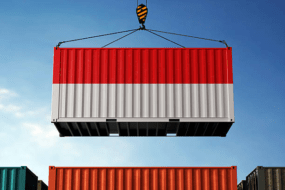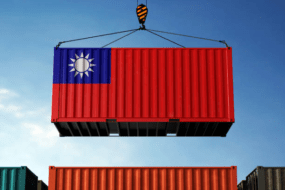- Home
- Trade News
- How to find Suppliers in Vietn ...

Since the US-China Trade War started in January 2018, Vietnam has rapidly become a more advantageous substitute for China. As a result, one of the main goals of investors visiting Vietnam is to find local producers who are capable of producing the specified components or goods. Here, we’ll assist investors in comprehending Vietnam’s industrial environment and navigating the nation’s supplier network. You can view all these information on Vietnam in here on our platform: https://data.cic-tp.com/asia-trade-data/vietnam-import-export-data
Industrial clusters
The textile and apparel, electronics, and mechanical engineering industries are three that are crucial to the growth of Vietnam’s manufacturing sector.
Textile and garment
After China and India, Vietnam has grown to become the world’s third-largest textile and apparel manufacturing powerhouse. 85 percent of the Vietnamese textile and apparel industry’s concentration is on the garment processing stage. CMT, which stands for cut-make-trim, is the primary production technique.
About 7,000 businesses make up the sector, which employs 2.7 million people. Small and medium-sized businesses surround and predominate large firms (SMEs). The Red River Delta and the Southeast are home to the majority of these businesses.
Electronics
The electronic cluster is export-focused and non-resource-focused. There are roughly 2,500 businesses in the sector, which employs about 800,000 people. This cluster’s supply chains are made up of numerous tier-2 firms that give international firms components and parts. Investors include businesses like Samsung and Nokia that are from South Korea and Japan. The Saigon Hi-Tech Park has witnessed significant investments from businesses in the Red River Delta.
Mechanical engineering
Three sub-sectors of the Vietnamese mechanical industry—motorcycles and motorcycle spare parts, home appliances and tools, and automobiles and automobile parts—have particular strengths. More than 24,000 engineering and metal processing businesses are located throughout the nation. OEM suppliers can be found in the Red River Delta area in cities like Hanoi and Hai Phong. The manufacture of auto parts has increased in Quang Nam province in the central area. In the south, the provinces of Dong Nai and Binh Duong are home to the majority of the mechanical clusters.
Raw materials
Vietnam has not yet gathered the required resources, despite the recent strong expansion of the ancillary sectors. Still, a lot of raw materials are imported.
Textile
Vietnam must import fibre because domestic production can only satisfy 1% of demand. In contrast, yarn is produced at a rate of 2 million tonnes annually, exceeding domestic demand. This output is exported to other nations in the amount of two thirds. However, 65 to 70 percent of the textiles required to feed the Vietnamese textile industry must be imported from China, Taiwan, and other countries due to Vietnam’s inefficiency in weaving and dyeing, lack of advanced technologies, and subpar designs.
Plastic
Vietnamese plastic makers still have to import a sizable amount of their raw materials despite recent significant developments. To support domestic manufacturing, the plastics industry, in particular, imports around 4 million tonnes of plastic materials. Plastic resins, plastic powder, and additives are imported plastic ingredients. The primary imported materials are PE, PP, PET, PVC, PS, ABS, and so on. Most of the plastic materials that Vietnam imports come from Saudi Arabia, South Korea, Taiwan, Thailand, and China.
Steel
Vietnam’s steel sector is likewise reliant on imported inputs and has unevenly developed mechanical and building steel. Construction steel, steel coil, and steel pipes make up the majority of production outputs.
Steel producers and even major Vietnamese firms (Vietnam Steel Corporation, Hoa Phat Corporation, or Formosa Corporation) solely concentrate on certain goods as a result of industrial fragmentation, inadequate investment in technology and manufacturing facilities, and poor labour costs.
Because these goods have more stringent technical requirements, the domestic steel industry is unable to produce steel for mechanical engineering. As a result, steel is still imported in large quantities by mechanical engineering businesses for use as a production input from China, Japan, and South Korea.
Aluminum
The primary source of aluminium is bauxite. Bauxite resources are currently found in more than 40 nations, with Vietnam holding the third-largest national reserve with 2.1 billion tonnes. However, the nation still has to deal with a variety of challenges related to regional characteristics, infrastructure, and technology in bauxite extraction and aluminium smelting. As a result, foreign nations are where Vietnam gets the majority of its materials for casting aluminium.
Supporting industrial companies
Domestic enterprises and FDI companies make up the two primary categories of supporting industrial companies. Comparatively speaking to the FDI corporations that dominate the market, domestic companies only make up 16 percent of the market. Each group has particular advantages and disadvantages that could influence an investor’s choice while sourcing in Vietnam.
FDI manufacturers
A significant majority of Vietnam’s manufacturing are FDI firms. These businesses are more visible online and are simple to find while conducting online searches. These businesses typically have a greater manufacturing scale, superior infrastructure, and cutting-edge technology, making them larger suppliers. However, working with little customers doesn’t hold much appeal for such big businesses. The majority of FDI businesses are fluent in English and mainly originate in Taiwan, South Korea, and Japan.
Vietnamese manufacturers
Vietnamese businesses make up a smaller fraction, yet they appear more appealing to international customers because of their competitive prices when compared to larger FDI businesses. However, many businesses are difficult to locate due to their limited internet presence and communicational English skills.
Small and medium-sized businesses (SME) with modest production scales and capacities, lacking in cutting-edge technologies, make up the majority of Vietnamese businesses. Their goods are capable of meeting the requirements of foreign customers, but they are unable or unwilling to fund audit systems like the Walmart audit programmes. Vietnamese businesses, on the other hand, are adaptable, open to smaller orders, and eager to pick up new skills and adjust to new technology. Therefore, Vietnamese businesses lack experience rather than resources or expertise.
Find the exact product you are interested in here at https://tradedata.pro/trade-database-demo/
How to approach a supplier network in Vietnam?
Through regional chambers of trade and industry, which are active in Vietnam’s major cities, investors can connect with supplier networks. Additionally, trade shows and workshops are open to foreign investors. These are normally conducted once a month in important economic hubs, drawing notable Vietnamese manufacturing firms with ample production capacity and a need for new customers.
Using websites like Alibaba.com or even online searches, investors can try to find Vietnamese companies directly. However, compared to more advanced manufacturing nations like China, Vietnam-based sourcing or consultancy firms would be able to offer more value.
Local sourcing firms connect investors with competent suppliers by utilising their local network and subject matter expertise. Investors should use caution in locating reputable sourcing firms because some of them play other functions than true sourcing firms, such as traders.
Trading firms do not provide the necessary information about manufacturers, such as the company profile, production capacity, important contact person, sample cost, MOQ requirements, certifications, etc. that sourcing organisations do.
Additionally, sourcing firms can help you with a visit to a plant, a background check on a supplier, or even testing and logistics through a third party. While some businesses would charge based on project milestones or specific services, others will offer similar services as an all-inclusive package.
To find out more about accessing a new market, you can check out this article which shows you how to use Trade Data Pro to access Global Trade Markets: https://blog.tradedata.pro/say-hello-to-our-new-release-of-tradedata-pro/
The most trustable and reliable source for Trade Data.
Trade Data Pro is proudly made in Singapore. Singapore has been one of the world’s most politically stable countries, with an open and trade-driven economy. Trade Data Pro is presented by CIC, a government-linked company in Singapore CIC is a Join Venture of Zall Smartcom, SGX and GeTS.)
Since the launch of Trade Data Pro in 2018, Trade Data Pro has received overwhelmingly positive remarks from market. This is because Trade Data Pro has wide coverage, low cost, and fast response. There are many leading companies from different industries that have subscribed to Trade Data Pro .
Trade Data Pro was awarded with Singapore Quality Class in 2020 and Stevie Award Gold in 2021. Businesses need information to reveal trends, identify market opportunities, track competitors buyers and suppliers, and better understand supply chain potential.
Finding these critical data has traditionally been challenging. But this information do exist, but as part of government import and export filing requirement. The detailed shipment information which are within these filings constructions the core of the global trade.
Trade Data Pro has gathered and packaged these information as business intelligence. Our solution helps companies understand the flow of goods across borders and features the world’s largest searchable trade database. We do the heavy lifting for you by reviewing, standardising, and cleaning data, then delivering in an intuitive format.
Learn how TradeData.Pro works by watching the video below! View here on Youtube as well: https://youtu.be/QQ9wG-CesI8
Automotive Business Coffee Ecommerce Electronics Export Garments Import Industries Manufacturers Opportunities Pharmaceuticals Suppliers Textiles United States Vietnam
Recent Posts
Archives
- June 2025
- May 2025
- April 2025
- March 2025
- February 2025
- January 2025
- December 2024
- November 2024
- April 2024
- March 2024
- January 2024
- December 2023
- November 2023
- October 2023
- September 2023
- August 2023
- July 2023
- June 2023
- May 2023
- April 2023
- March 2023
- February 2023
- January 2023
- December 2022
- November 2022
- October 2022
- September 2022
- August 2022
- July 2022
- June 2022
- May 2022
- April 2022
- March 2022
- February 2022
- January 2021
Categories
Recent Post
Indonesia Exports: Sunny Outlook Despite Coal, US
- June 30, 2025
- 9 min read
Taiwan Exports: Hitting Record Highs in Challenging
- June 30, 2025
- 7 min read
Forecasting a Brighter Outlook for Chile Imports
- May 30, 2025
- 8 min read
All Tags
Agriculture Automotive Brazil Business Business Opportunities Buyers China Coffee Commodities Crops Ecommerce Economic Economy Electronics Energy Environmental Europe Export Exports Future Garments Global Import India Industries International Trade Leads Leads Generation manufacturing Markets Opportunities Pharmaceuticals Prices Rice Russia Supplier Textiles Trade Trade Data Trade Data Pro Turkey Ukraine United States Vietnam Worldwide








